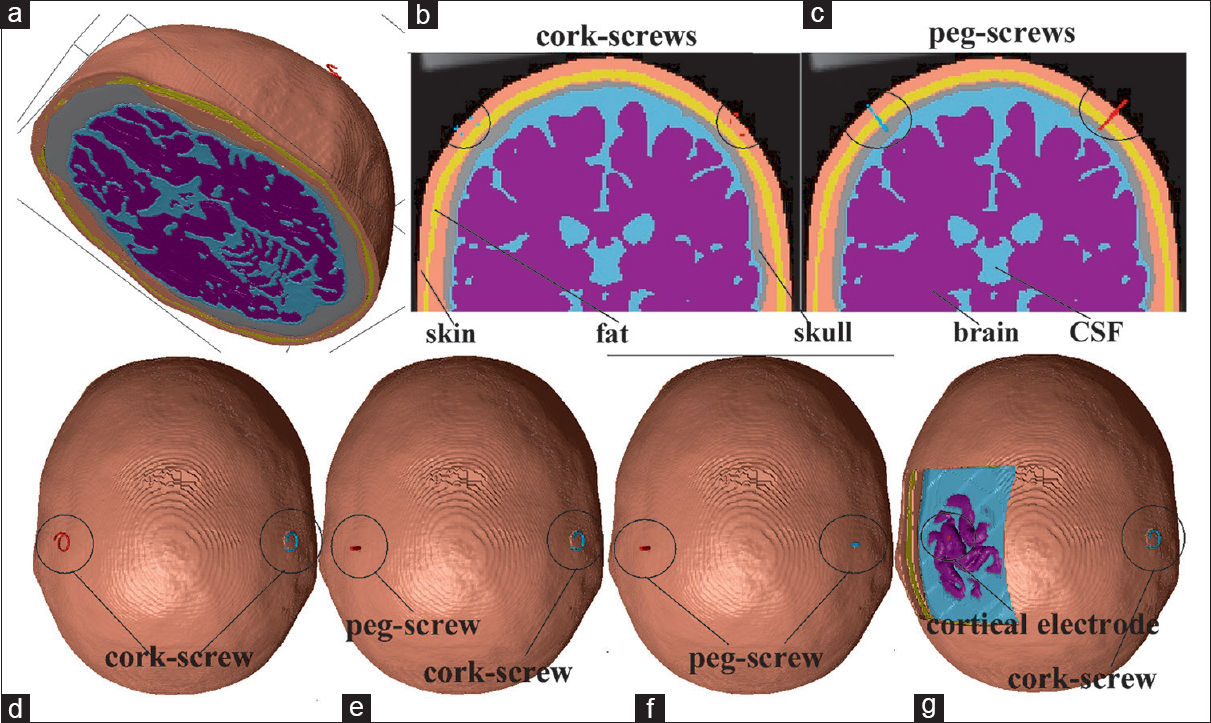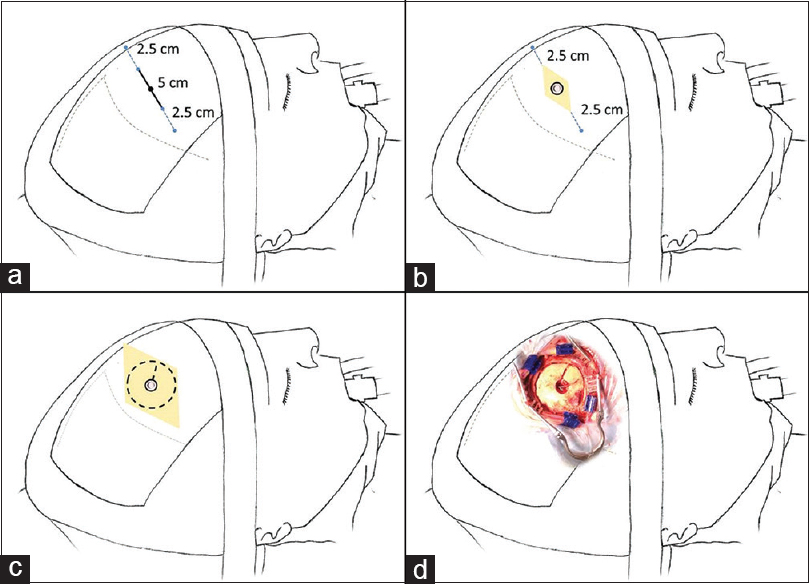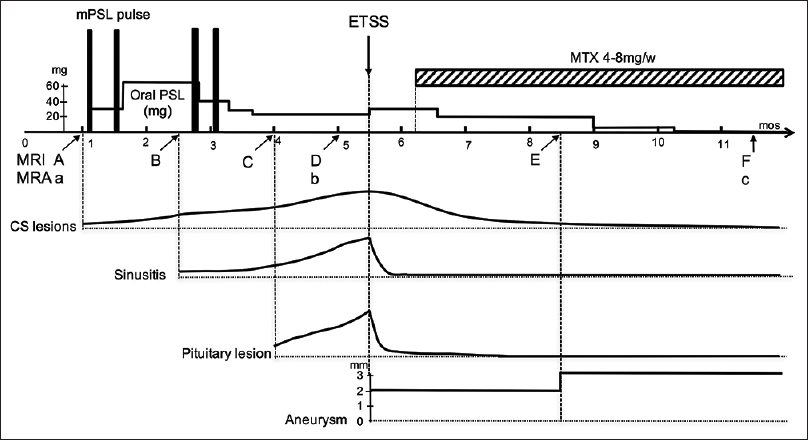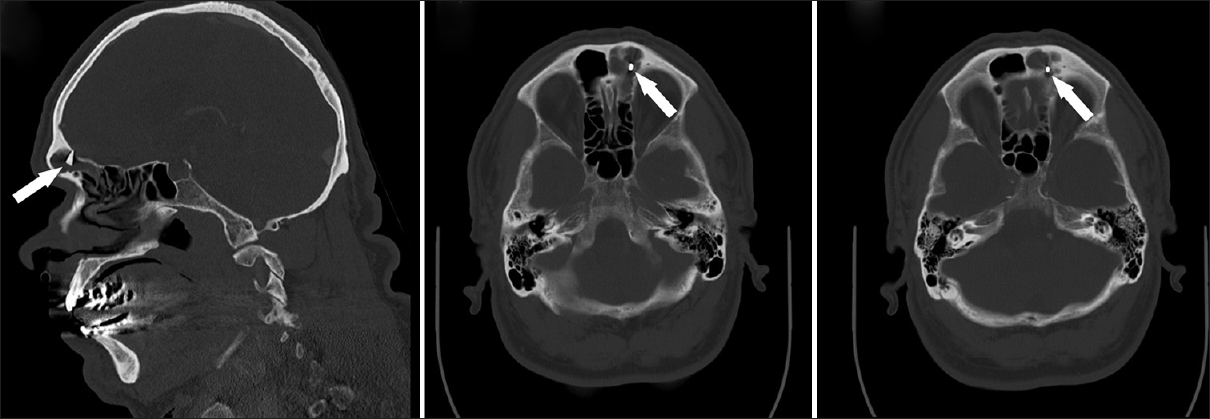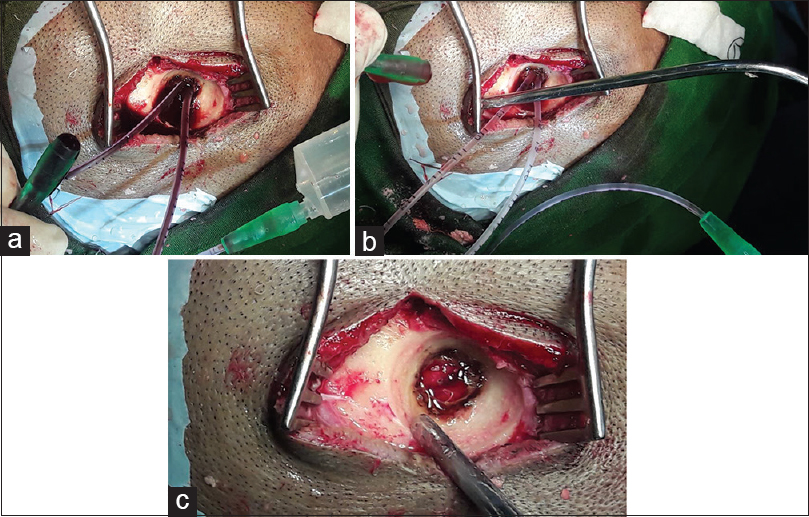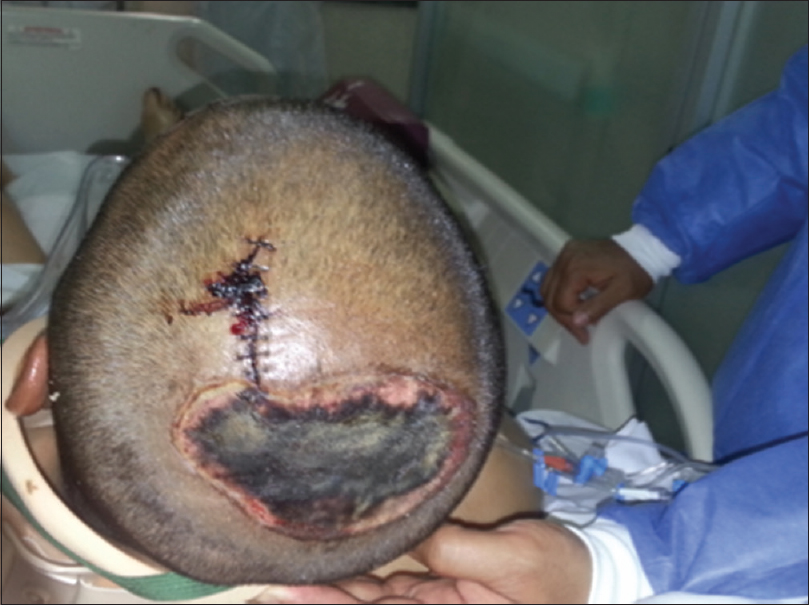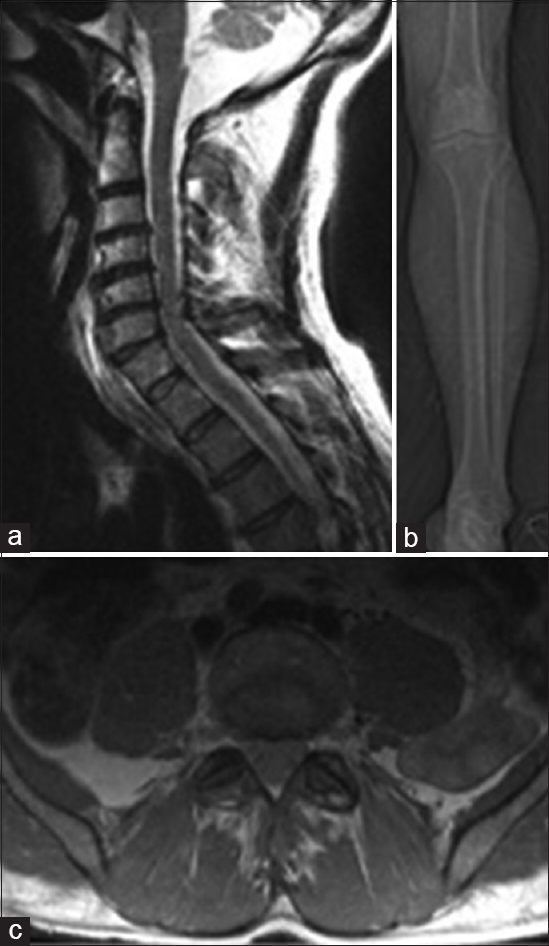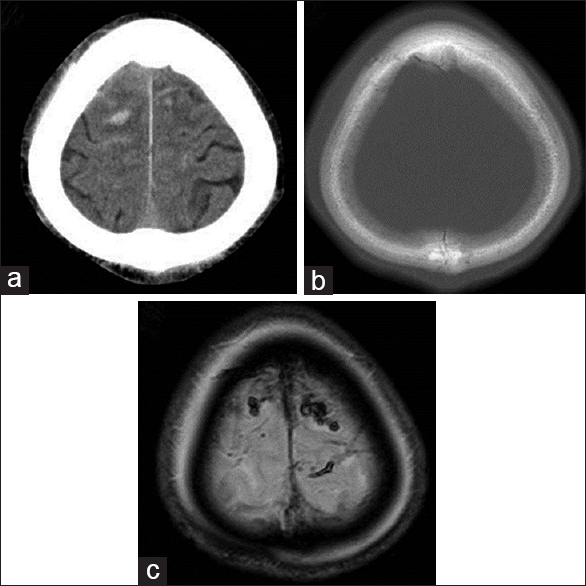Rescue pallidotomy for dystonia through implanted deep brain stimulation electrode
Date of publication: 14-Nov-2016
Background:Some patients with deep brain stimulation (DBS), where removal of implants is indicated due to hardware related infections, are not candidates for later re-implantation. In these patients a rescue lesion through the DBS electrode has been suggested as an option. In this case report we present a patient where a pallidotomy was performed using the DBS electrode.
Comparison of effectiveness between cork-screw and peg-screw electrodes for transcranial motor evoked potential monitoring using the finite element method
Date of publication: 11-Nov-2016
Background:Intraoperative monitoring of motor evoked potentials by transcranial electric stimulation is popular in neurosurgery for monitoring motor function preservation. Some authors have reported that the peg-screw electrodes screwed into the skull can more effectively conduct current to the brain compared to subdermal cork-screw electrodes screwed into the skin. The aim of this study was to investigate the influence of electrode design on transcranial motor evoked potential monitoring. We estimated differences in effectiveness between the cork-screw electrode, peg-screw electrode, and cortical electrode to produce electric fields in the brain.
Conversion technique from neuroendoscopy to microsurgery in ventricular tumors: Technical note
Date of publication: 11-Nov-2016
Background:Ventricular tumors represent a major neurosurgical challenge, making endoscopic approach an invaluable tool as it gained importance due to technological advances. Nevertheless, the method is not exempt of risk and limitations, sometimes requiring an open surgery. Thus, initial measurements must be adopted in order to simplify an eventual need for conversion to open craniotomy.
Steroid-resistant Tolosa–Hunt syndrome with a de novo intracavernous aneurysm: A case report
Date of publication: 11-Nov-2016
Background:We report a case of steroid-resistant Tolosa–Hunt syndrome (THS) with recurrent bilateral painful ophthalmoplegia, accompanied with sphenoid sinusitis, pituitary abscess, and an aneurysm arising from the cavernous portion of the internal carotid artery.
Cerebral foreign body granuloma in brain triggering generalized seizures without obvious craniocerebral injury: A case report and review of the literature
Date of publication: 11-Nov-2016
Background:Intracerebral foreign body granuloma is rarely reported. We present the case of a male patient with a cerebral foreign body granuloma.
A review of sub acute subdural hematoma (SASDH) with our institutional experience and its management by double barrel technique (DbT): A novel technique
Date of publication: 09-Nov-2016
Background:Subacute subdural hematoma (SASDH) is an entity which is yet to capture the popular imagination among the neurosurgeons. Its management is often equated clinically to that of the chronic subdural hematoma (CSDH). However, their neurological deterioration is usually rapid, which seems to align them with acute subdural hematoma (ASDH). We proceed for their epidemiological evaluation. The advantages of a novel “double barrel technique (DbT)” over the conventional burrhole drainage are also presented.
Penetrating thoracic spinal cord injury with ice pick extending into the aorta. A technical note and review of the literature
Date of publication: 09-Nov-2016
Background:Penetrating spinal cord injuries pose a great challenge to both patients and the treating physicians. Although the overall incidence of penetrating spinal cord injury is the highest in the military, the ubiquity of guns in our society continues to make penetrating spinal cord injury prevalent in the civilian population. These types of injuries are particularly complicated because, beyond the trauma to the neural elements and supporting structures, other organs can be affected and a team approach is required for successful treatment.
Brain hemorrhage after electrical burn injury: Case report and probable mechanism
Date of publication: 09-Nov-2016
Background:High-voltage electric injury may induce lesion in different organs. In addition to the local tissue damage, electrical injuries may lead to neurological deficits, musculoskeletal damage, and cardiovascular injury. Severe vascular damage may occur making the blood vessels involved prone to thrombosis and spontaneous rupture.
CT-negative, MRI GRE-positive primary motor cortex contusion causing isolated foot drop
Date of publication: 09-Nov-2016
Background:Isolated acute foot drop due to traumatic brain injury is exceedingly rare and is often misdiagnosed during initial evaluation. Here, we present the case of a patient who presented with left foot drop after falling off a bicycle.
Paraplegia caused by cerebral contusions in the bilateral precentral gyri
Date of publication: 09-Nov-2016
Background:Paraplegia is mainly caused by spinal cord disease and rarely occurs due to head trauma. In this report, we describe a case of paraplegia caused by cerebral contusions in the bilateral precentral gyri.



